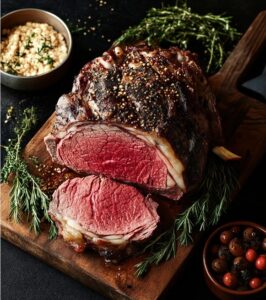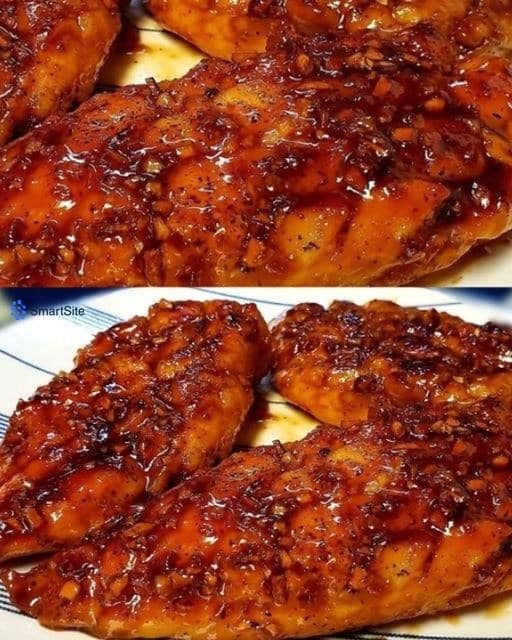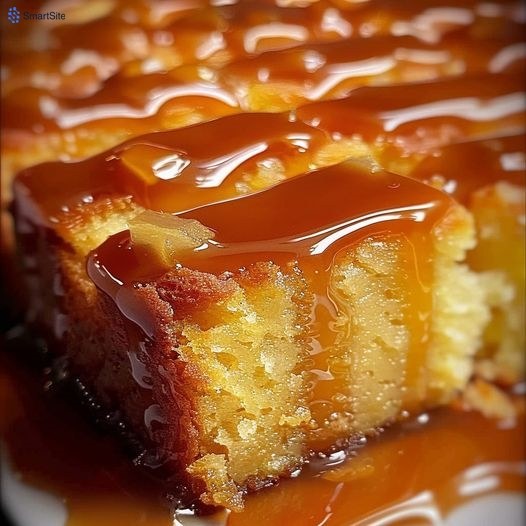When it comes to a sumptuous and savory meal, prime rib takes the crown. This cut of beef is renowned for its tenderness, juiciness, and rich flavor. If you want to impress your guests or simply treat yourself to a special meal.
Choosing the Cut
For the best results, opt for a bone-in prime rib roast weighing between 6-8 pounds. The bone enhances the flavor and juiciness of the meat.
Seasoning and Preparation
Before you start cooking, it’s essential to season the prime rib properly. Here’s a simple yet effective seasoning method:
- Olive Oil: 2 tablespoons
- Salt and Pepper: Generous amounts to taste
- Optional: Garlic cloves for an extra burst of flavor
To infuse the meat with garlic, use a paring knife to make small incisions in the roast and insert the cloves. This method ensures the garlic flavor permeates the meat during cooking.
Initial Roasting
- Preheat the Oven: Preheat your oven to a scorching 500°F (260°C). This high temperature is crucial for searing the meat and creating a flavorful crust.
- Prepare the Roast: Place the prime rib roast on a rack in a roasting pan. Rub the roast with olive oil and generously season it with salt and pepper. If desired, insert the garlic cloves into the roast for added flavor.
- Roast at High Temperature: Place the roasting pan in the oven and roast the prime rib at 500°F for 15 minutes. This initial high-temperature roast will seal in the juices and create a delightful crust on the outside.
Roasting to Perfection
- Reduce the Oven Temperature: After the initial roast, reduce the oven temperature to 325°F (160°C).
- Continue Roasting: Continue roasting the prime rib until it reaches your desired level of doneness. Use a meat thermometer to check the internal temperature for precision:
- Medium-Rare: Aim for 135°F (57°C)
- Medium: Target 140°F (60°C)
- Well-Done: Go for 150°F (66°C)
- Rest the Roast: Once the prime rib reaches the desired temperature, remove it from the oven and allow it to rest for 15-20 minutes before slicing. Resting is crucial as it helps retain the juices and ensures a succulent and tender prime rib.
Tips for Perfect :
- Seasoning Variations: Experiment with different herbs and spices to enhance the flavor. Rosemary, thyme, and a sprinkle of paprika can add depth to the seasoning.
- Use a Meat Thermometer: A meat thermometer is an indispensable tool for achieving the perfect doneness. Insert it into the thickest part of the roast, avoiding the bone, to get an accurate reading.
- Resting the Meat: Do not skip the resting period. This allows the juices to redistribute throughout the meat, resulting in a more tender and flavorful roast.
Serving :
- Carving: Use a sharp carving knife to slice the prime rib into desired portions. Carve against the grain to ensure each slice is tender.
- Accompaniments: Serve your prime rib with classic sides like roasted vegetables, mashed potatoes, and a rich beef au jus or horseradish sauce.
- Presentation: Arrange the slices on a warm platter and garnish with fresh herbs for a beautiful presentation.
Mastering the art of cooking prime rib is a rewarding culinary achievement. This guide provides you with all the steps necessary to prepare a prime rib roast that is tender, juicy, and bursting with flavor. Whether for a special occasion or a delightful family dinner, this recipe will impress and satisfy. Enjoy the process and the delectable results!


